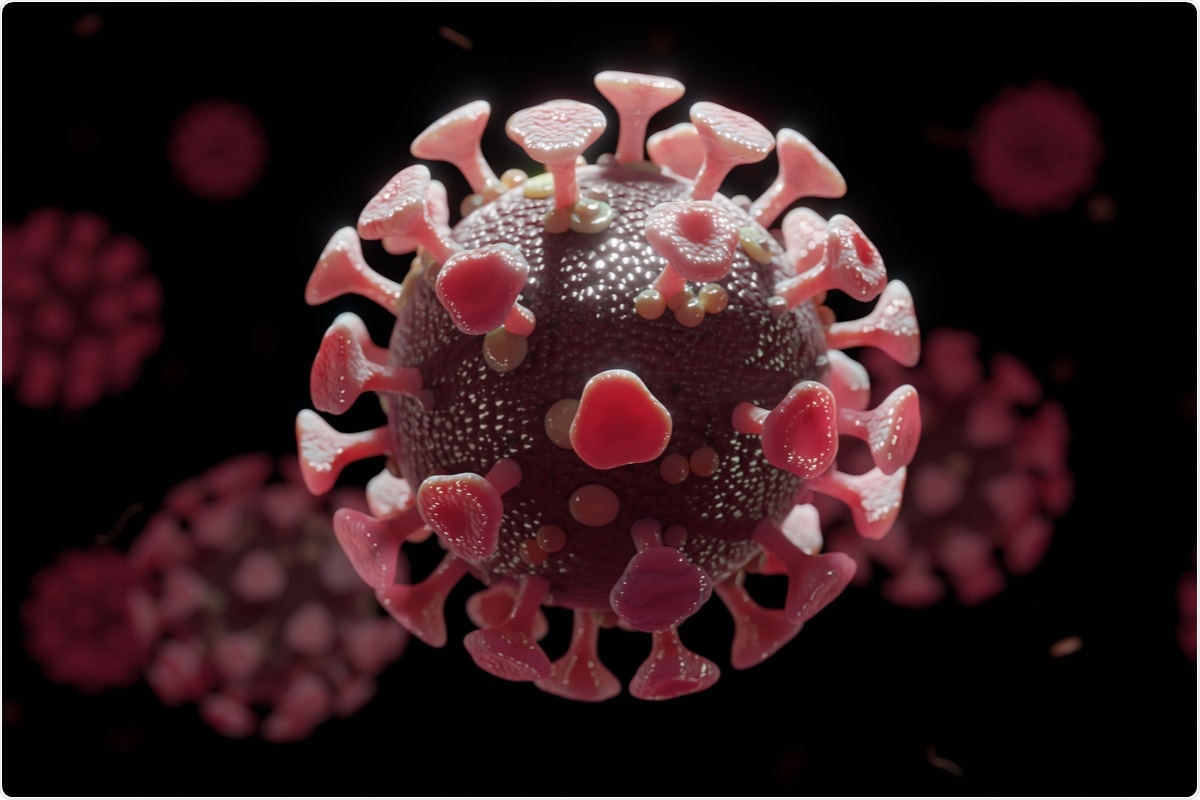The severe acute respiratory syndrome coronavirus 2 (SARS-CoV-2) has mutated since its initial emergence in Wuhan, China, in late 2019. to survive. A select few mutations have allowed the virus to spread faster and cause more severe infection. Variants of concern that contain such mutations, can we drink green tea with cold water such as the Delta variant, have also acquired mutations to evade neutralizing antibodies.
 Study: High genetic barrier to SARS-CoV-2 polyclonal neutralizing antibody escape. Image Credit: Dotted Yeti/ Shutterstock
Study: High genetic barrier to SARS-CoV-2 polyclonal neutralizing antibody escape. Image Credit: Dotted Yeti/ Shutterstock
New research published in Nature* suggests SARS-CoV-2 spike protein substitution mutations can create a replication-defective viral particle known as pseudotyped viruses that makes the virus resistant to vaccine-induced antibodies. However, people who recovered from SARS-CoV-2 infection and later received the mRNA vaccine could eliminate these pseudotypes.
Study details
The researchers used HIV-1 pseudotypes bearing the SARS-CoV-2 and SARS-CoV spike protein. The goal was to investigate how effective convalescent plasma is in neutralizing parental and chimeric spike proteins.
The convalescent plasma was obtained 1.3 months after 26 individuals recovered from coronavirus disease 2019 (COVID-19) infection. They were selected for their high SARS-CoV-2 neutralization titers.
Results showed that 21 out of 26 convalescent plasma samples were less effective in neutralizing the SARS-CoV-2 pseudotype. For comparison, the SARS-CoV pseudotype was more sensitive to the antibodies in the plasma.
Targets of neutralizing antibodies from convalescent plasma
Further research mimicked the ability of SARS-CoV-2 to neutralize antibodies with a chimeric virus. The goal was to find targets of neutralizing antibodies from convalescent plasma.
The team found neutralizing antibodies target multiple substitutions surrounding a specific epitope. Other neutralizing antibody targets included substitutions from the spike coding sequence.
Overall, the SARS-CoV-2 mutations targeted by neutralizing antibodies in plasma were in specific elements within the N-terminal domain, receptor binding domain, and other spike domains.
Many SARS-CoV-2 mutations were clustered around various elements making a ‘supersite,’ targeted by N-terminal domain binding neutralizing antibodies.
The antibodies obtained from convalescent plasma could not detect SARS-CoV-2 mutations that can evade class I receptor-binding domain antibodies. Other sites in spike amino acids also showed variations that were not targeted by antibodies.
The results suggest SARS-CoV-2 mutations in the spike protein may have evolved to avoid neutralizing antibodies. This corresponds to observations of reduced neutralization from antibodies in 34 out of 38 chimeric viruses containing the spike mutations.
About 13 spike protein mutations from chimeric SARS-CoV-2 viruses were identified to reduce plasma neutralization sensitivity. When the researchers combined all 13 spike mutations to create a synthetic ‘polymutant’ spike protein sequence, they found the greatest resistance to neutralization than any one mutation alone.
Neutralizing potency against escape mutations increase with natural immunity and vaccination
The researchers next looked at sensitivity to neutralization in 14 convalescent plasma samples from previously infected individuals who later became vaccinated with the mRNA vaccine. They used a panel of pseudoviruses containing the spike protein with 13 escape mutations.
Their pseudoviruses showed greater resistance to neutralization than B.1.1.7 and B.1526. However, the decreased sensitivity to neutralization was similar to what’s been observed in the P.1 variant and less than the B.1.351.3 variant.
As before, antibodies from convalescent plasma samples showed decreased neutralization against SARS-CoV-2 pseudotypes. The researchers suggest that antibody pressure may have caused dominant variants such as B.1.351.3 to develop nine spike mutations that resist neutralizing antibodies.
However, plasma samples from infected then vaccinated individuals could retain their neutralizing activity — especially among a pseudovirus containing 20 spike mutations in both the N-terminal domain and the receptor-binding domain.
The ability to neutralize viruses with 20 spike mutations appeared to be from antibodies targeting both the receptor-binding domain and other non-receptor binding domain determinants.
Plasma samples from infected and later vaccinated individuals could also neutralize other pseudoviruses resistant to neutralizing antibodies from individuals who recovered from natural infection only. Additionally, plasma samples from infected and later vaccinated individuals neutralized the Delta variant and an emerging A.VOI.V2 variant.
*Important notice
This is an unedited manuscript that has been accepted for publication. Nature Research are providing this early version of the manuscript as a service to our authors and readers. The manuscript will undergo copyediting, typesetting and a proof review before it is published in its final form. Please note that during the production process errors may be discovered which could affect the content, and all legal disclaimers apply.
- Schmidt, F. et al. (2021) "High genetic barrier to SARS-CoV-2 polyclonal neutralizing antibody escape", Nature. doi: 10.1038/s41586-021-04005-0.
Posted in: Medical Science News | Medical Research News | Disease/Infection News
Tags: Antibodies, Antibody, Convalescent Plasma, Coronavirus, Coronavirus Disease COVID-19, HIV, HIV-1, immunity, Mutation, Protein, Pseudovirus, Receptor, Research, Respiratory, SARS, SARS-CoV-2, Severe Acute Respiratory, Severe Acute Respiratory Syndrome, Spike Protein, Syndrome, Vaccine, Virus

Written by
Jocelyn Solis-Moreira
Jocelyn Solis-Moreira graduated with a Bachelor's in Integrative Neuroscience, where she then pursued graduate research looking at the long-term effects of adolescent binge drinking on the brain's neurochemistry in adulthood.
Source: Read Full Article
